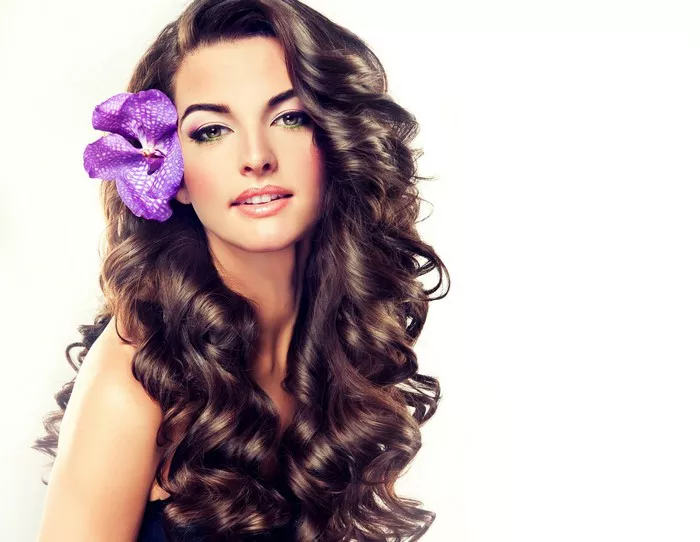Your hair has a way of reflecting changes within your body and environment. If you’ve noticed your once beautifully wavy hair turning straight, you’re not alone. Many individuals experience shifts in hair texture over time. In this article, we’ll delve into the various factors that could lead to this unexpected change and provide insights into understanding and managing your hair’s evolving texture.
Difference Between Curly and Straight Hair
Curly and straight hair exhibit distinct textures and characteristics. Curly hair forms spiral or wavy patterns due to the shape of the hair follicle. This structure often leads to increased volume and a tendency to frizz. In contrast, straight hair lacks noticeable curls and tends to lie flat against the scalp. The differences are attributed to the number of disulfide bonds in the hair’s protein structure. While curly hair has more of these bonds, straight hair has fewer, resulting in varying levels of flexibility. Each hair type requires specific care routines to enhance its natural beauty and manage unique challenges.
Can curly hair become straight?
Yes, curly hair can become straight due to various factors. Hormonal changes, such as those during puberty or pregnancy, can alter the shape of hair follicles, causing temporary or even permanent changes in texture. Excessive heat styling, improper hair care practices, or prolonged use of chemical straightening treatments can also lead to a loss of curls and increased straightness. However, it’s essential to note that each person’s hair responds differently to these influences. Embracing proper care, avoiding excessive heat, and using appropriate products can help maintain or enhance your natural curl pattern while minimizing the risk of drastic texture changes.
Reasons why curly hair becomes straight
Curly hair transforming into straight hair can be attributed to several factors, resulting from both internal and external influences. Here are some reasons behind this intriguing phenomenon:
1. Hormonal Changes:
Hormones play a vital role in hair texture. Shifts during puberty, pregnancy, or menopause can impact hair follicle shape, altering curls into straight strands.
2. Heat Styling:
Excessive use of heat styling tools like flat irons can weaken the hair’s protein structure. Continuous exposure to high temperatures can lead to a loss of curl pattern.
3. Chemical Treatments:
Regular use of chemical treatments like relaxers or keratin treatments can alter the hair’s bonds, disrupting curls and making the hair appear straighter.
4. Genetics:
Genetic predisposition plays a role. If individuals with curly hair have genetic variations favoring straight hair, these traits might become more prominent over time.
5. Age:
Hair texture can naturally change with age due to hormonal shifts and other factors, leading to the gradual loss of curls.
6. Hair Care Routine:
Using products with harsh chemicals, overwashing, and using the wrong brushes can contribute to frizz and weaken curls.
7. Environmental Factors:
Exposure to humidity or dry environments can temporarily alter hair texture, making it appear straighter or frizzier.
Understanding these factors can help individuals prevent unwanted changes in hair texture and adopt appropriate strategies to maintain their desired look.
How to Protect your Hair?
Protecting your hair is essential to maintain its health, texture, and overall appearance. Whether you have curly, straight, or any other hair type, here are some crucial steps you can take to ensure your hair stays strong and beautiful:
1. Gentle Washing:
Use sulfate-free, gentle shampoos to avoid stripping natural oils from your hair. Overwashing can lead to dryness and damage.
2. Conditioning:
Regularly use a conditioner that suits your hair type. Conditioning helps retain moisture, improve manageability, and prevent breakage.
3. Limit Heat Styling:
Reduce the use of heat styling tools like hair dryers, flat irons, and curling wands. When necessary, use a heat protectant spray before styling.
4. Air Dry:
Whenever possible, allow your hair to air dry naturally. This reduces exposure to heat and minimizes the risk of heat-related damage.
5. Protective Styles:
Opt for protective hairstyles like braids or updos to shield your hair from harsh weather conditions and reduce manipulation.
See Also: The days you should not wash your hair after keratin treatment
Conclusion
The journey from wavy to straight hair might have you feeling puzzled, but understanding the underlying factors can help demystify the process. Hormones, genetics, environment, health, and hair care practices all play a role in shaping your hair’s transformation. Embracing these changes and adjusting your hair care routine accordingly can help you maintain healthy, beautiful hair regardless of its texture. If you’re concerned about sudden or drastic changes in your hair, consulting a healthcare professional or dermatologist is always a wise step to ensure your hair’s health and vitality.


